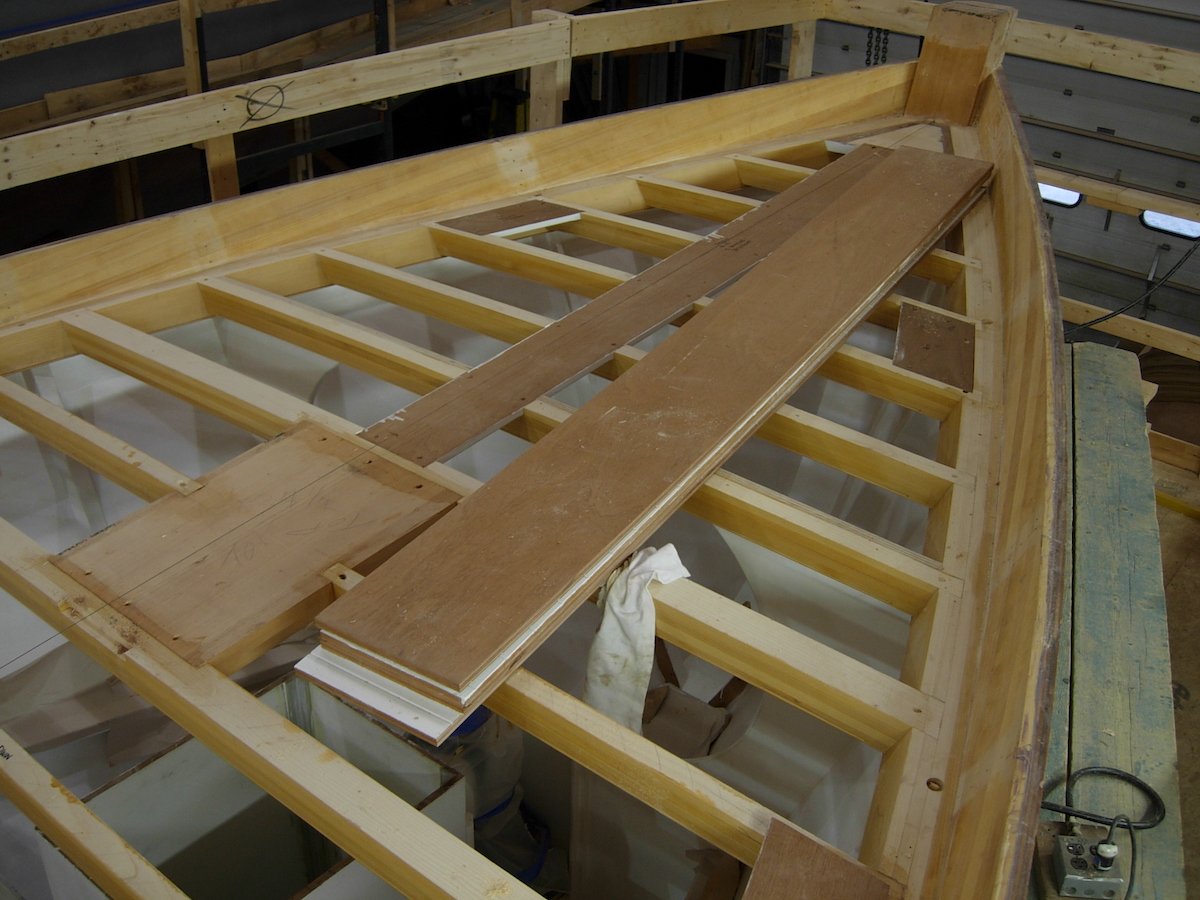Marjorie 2007
Marjorie
Marjorie is a short-ended ketch with a centerboard and separate skeg-mounted rudder. Drawing only six feet, she can explore and anchor in waters that are too thin for many offshore cruisers. The ketch rig, with its wide range of heavy weather sail combinations, is an undisputed champion when it comes to sailing offshore in a boat of this size. She's robust, having an 1-1/2" thick, 5-layer, cold-molded hull sheathed in fiberglass and epoxy, and an 1-1/4" thick 3-layer deck that's similarly sheathed just beneath its exposed top layer of teak. High grade sapele plywood reinforces not only the deck, but the cabin top in two layers, the bulwarks, the cabin sides, and the keelson as well, where, in these latter instances, the plywood is sandwiched between layers of mahogany to stabilize it and thus avoid splitting.
Her masts are of carbon fiber and her 15,000-lb ballast keel is of cast lead, configured with an impact step to keep the sheer load off the keel bolts in case she accidentally hits a ledge. Bronze floors give the main fin secure, load-distributing members to bolt to, and a portion of the skeg passes up through the hull and bolts to the underside of the cockpit sole so there's be plenty of strength where the rudder is hung. The hull's transverse strength comes from laminated frames of Douglas-fir and structural bulkheads of sapele plywood.
The centerboard trunk is of welded bronze plate that's inserted into the fin and ballast keel and securely fastened there. The centerboard, of fiberglass-covered foam, is weighted enough to make it sink, but not so much as to prevent the use of the three-part tackle that will raise and lower it.
Marjorie is luxurious as well as comfortable at sea. There's a water maker, air conditioning, a 7-1/2 kW diesel generator, and loads of storage space. Her topsides are protected by bronze-sheathed guardrails; she's fitted with a capstan that handles the anchor chain as well as rope, and the chain drops into a tall chain locker, where it should, with little if any resistance, flake down without piling up.
Below deck accommodations feature a snug main saloon with a pair of facing settees and a portside pilot berth, with TV and lockers opposite—all gathered around a drop-leaf table and bulkhead-mounted heating stove. Just aft, at the same level and separated only by a partial bulkhead, is a big galley, complete with freezer and microwave. This common space can be entered through its own companionway or through the owner's stateroom. That space, just aft of the galley, contains the owner's double berth to starboard and the NAV station opposite. The aft companionway (that leads from the cockpit) lies between. Two toilet rooms and a two-berth forward stateroom complete the interior's living spaces. In addition to the skylight that's over the main saloon, deck prisms and vent hatches admit daylight from above, illuminating the spaces below and saving electricity.
This boat's engine, cockpit, and wheel are unusually far aft, the wheel being of the fisherman type not often seen these days, but one that leaves the cockpit uncluttered. Bob brought to this design his finely-tuned sense of aesthetics. Besides a lovely hull with flaring bow atop a hollow waterline forward, and rolled-in quarters matched up with a wineglass transom aft, he has given her a tapering stem face, a custom stemhead fitting that incorporates a bow roller and headstay tang, and an inset waist topped with elliptical teak railcaps. Hardware, including the bow pulpit and lifeline stanchions, will be of bronze that, with time, will take on a handsome patina.
Excerpted with permission from Maynard Bray's writeup in WoodenBoat #194













